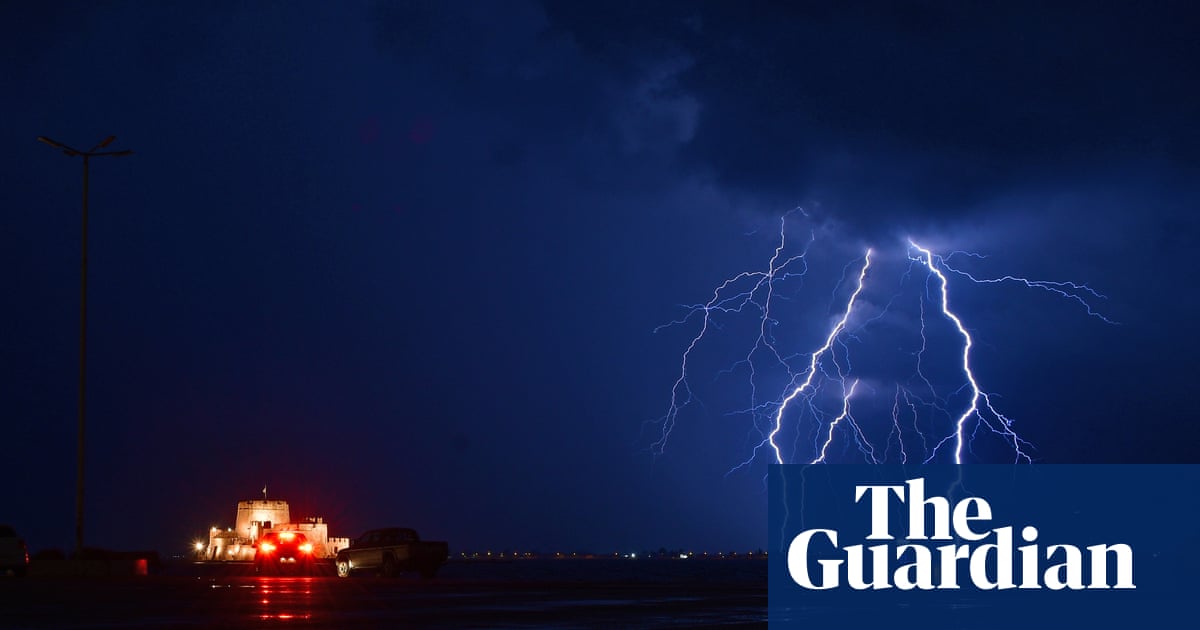
Getting drenched in a thunderstorm may seem like the epitome of a bad day, but research suggests it could be a lifesaver if lightning strikes.
In what appears to be a strong contender for an Ig Nobel prize, researchers have subjected 3D models of a human head to the equivalent of a direct lightning strike, revealing they experience less damage if wet.
“If you are outdoors and there is no shelter, wet skin is better than dry skin because the water film is like a ‘protective coating,” said René Machts, first author of the study from Ilmenau University of Technology in Germany. But, he added: “Finding a ‘protected’ location and making yourself as small as possible is safer.”
Writing in the journal Scientific Reports, Machts and colleagues say theoretical studies have previously suggested wet skin might reduce the size of the current that passes over the human body if struck by lightning. In addition, research has suggested animals with wet skin have a higher survival rate when exposed to lightning.
However, it remained unclear how water on a human head – as may occur in the rain that often accompanies thunderstorms – might affect the impact of a lightning strike.
To delve into the issue, the team built two human head models composed of three layers of an agar-like substance containing different levels of sodium chloride, carbon black or graphite to reflect the conductive properties of the brain, skull and scalp.
They then hooked electrodes up to the different layers, and the platform the models were placed on. While one of the models was left dry, the other was sprayed with a solution representing rainwater. Each model was subsequently put in a chamber and exposed to 10 simulations of a direct lightning strike.
The results reveal that a current travelled across the “scalp” with each lightning strike for both model heads, an event known as a flashover. However, shortly after the strike, yet before the flashover, the wet head had a 12.5% lower average electrical current in the brain layer and a 32.5% lower specific energy in the brain compartment than the dry head – something they say might be behind the increased survival rate among wet animals in earlier experiments.
The team add that the wet head also showed fewer signs of damage, such as perforations of the scalp or cracks, post lightning strike. But, they say, further work is needed.
Machts said: “Based on these results we plan to create further head models to quantify the effect of [for example] headgear and may investigate material for an optimal headgear to further reduce the current in the head. This could certainly help hikers who are unable to find shelter.”












